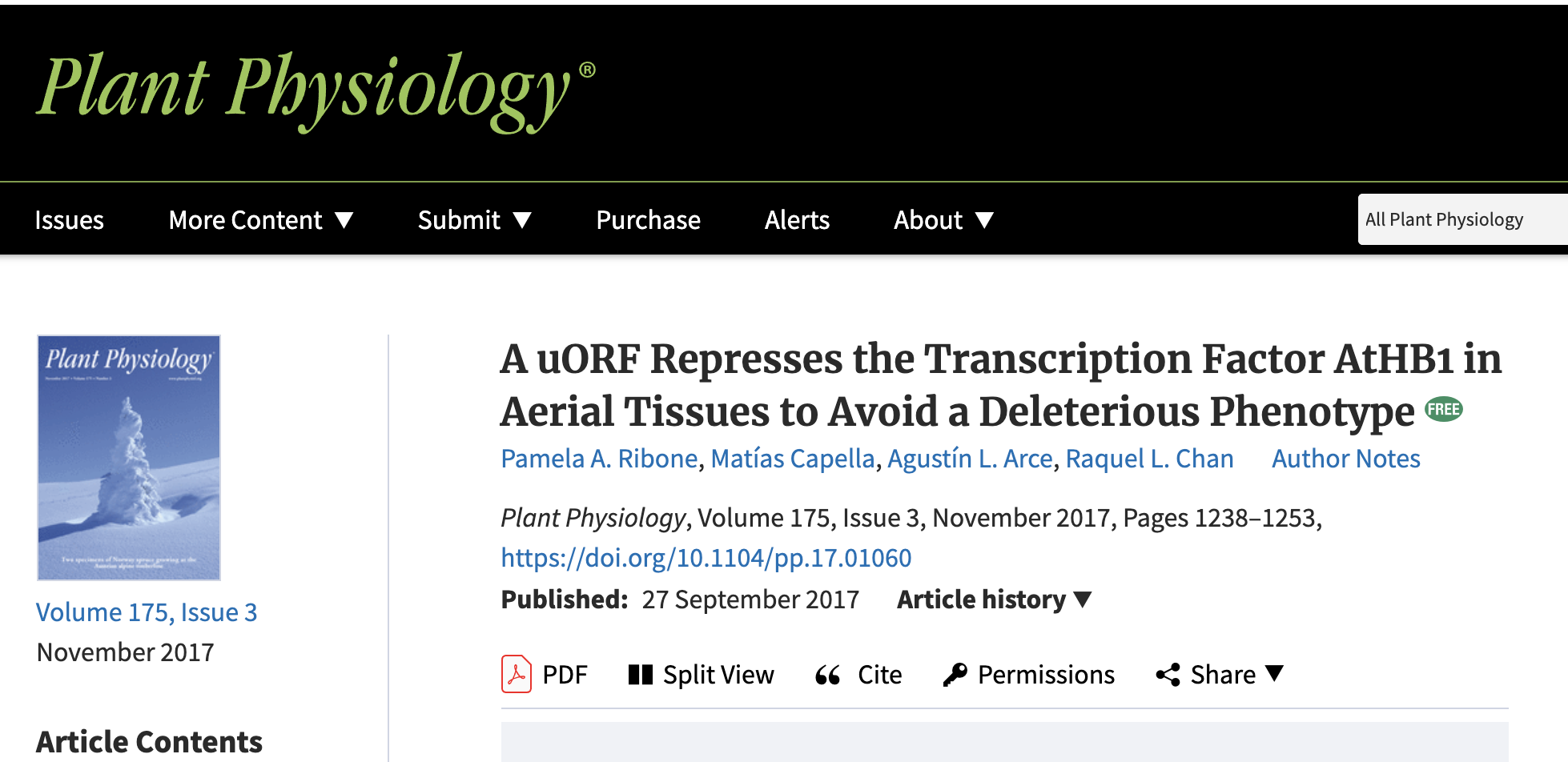A uORF Represses the Transcription Factor AtHB1 in Aerial Tissues to Avoid a Deleterious Phenotype

Host: Ding Yu
Date: 12 Jan 2022
Abstract:
AtHB1 is an Arabidopsis (Arabidopsis thaliana) homeodomain-leucine zipper transcription factor that participates in hypocotyl elongation under short-day conditions. Here, we show that its expression is posttranscriptionally regulated by an upstream open reading frame (uORF) located in its 5′ untranslated region. This uORF encodes a highly conserved peptide (CPuORF) that is present in varied monocot and dicot species. The Arabidopsis uORF and its maize (Zea mays) homolog repressed the translation of the main open reading frame in cis, independent of the sequence of the latter. Published ribosome footprinting results and the analysis of a frame-shifted uORF, in which the repression capability was lost, indicated that the uORF causes ribosome stalling. The regulation exerted by the CPuORF was tissue specific and did not act in the absence of light. Moreover, a photosynthetic signal is needed for the CPuORF action, since plants with uncoupled chloroplasts did not show uORF-dependent repression. Plants transformed with the native AtHB1 promoter driving AtHB1 expression did not show differential phenotypes, whereas those transformed with a construct in which the uORF was mutated exhibited serrated leaves, compact rosettes, and, most significantly, short nondehiscent anthers and siliques containing fewer or no seeds. Thus, we propose that the uncontrolled expression of AtHB1 is deleterious for the plant and, hence, finely repressed by a translational mechanism.